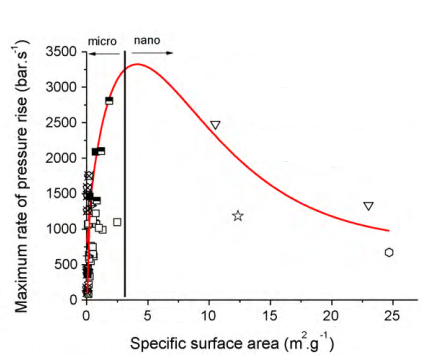Along with micrometric dust, nanometric dust particles present explosion and inflammation risks therefore they are combustible in air. Current data on risk explosion focus mainly on micrometric particles. A limited data are available for nanomaterials. In view of the trend of nanomaterials to agglomerate, it is difficult to extrapolate the results obtained with micropowders.
The pressure rise, the activation energy and the severity of an explosion have a tendency to increase with the decrease of the particle size. Nanomaterials seem to be more responsive, more explosive than bigger dust particles with the same chemical composition.
Brouillard et al. have shown, in the case of aluminum particles, the diameter of the particle influences the severity of the explosion in term of maximum pressure [J. Bouillard et al., Journal of Hazardous Materials 181 (2010) 873].
With the aim of preventing an explosion or a fire, the development of means of prevention and specific working methods may be useful. For example, it can be advantageous to consider the implementation of synthesis process or method of storing in a controlled atmosphere.



